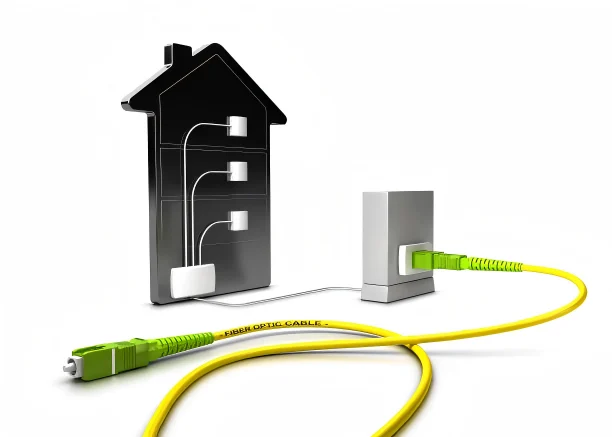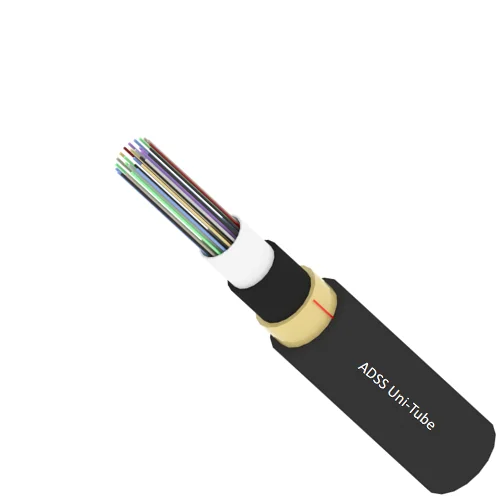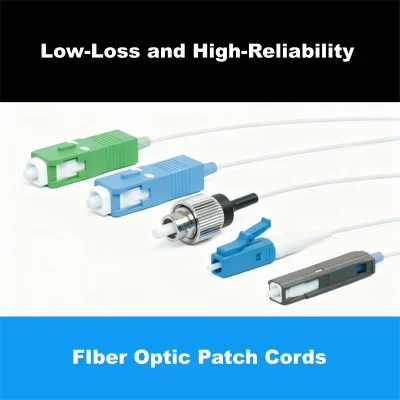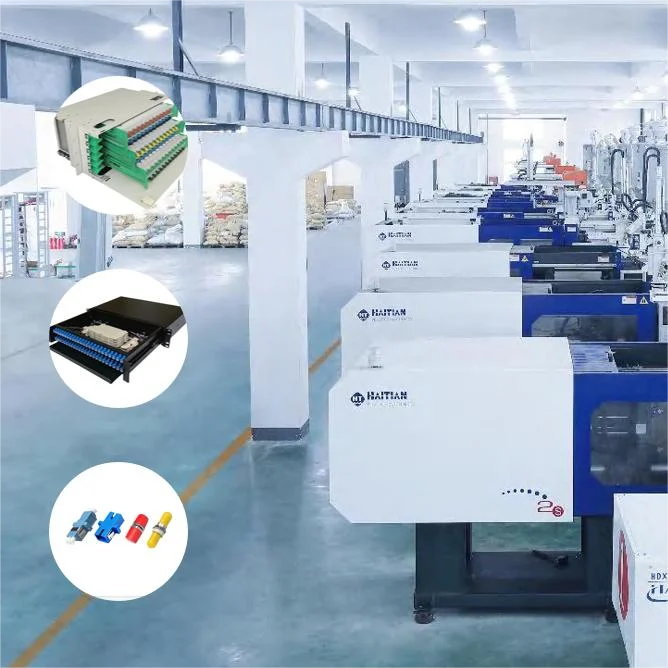Application
- Building A, Republic International Business Plaza, No. 3699 Gonghexin Road, Jing'an District, Shanghai
- +86-21-59175887
- market@soctfiber.com
- 86-17321363317
- 86-13341796231
Telecommunication
How Are Fiber Optic Cables Powering Our Connected World?
Slow internet and dropped calls frustrating you? Old cables can’t keep up. Fiber optics deliver lightning speed and reliability, connecting us like never before.
Fiber optic cables power our connected world by transmitting vast amounts of data at light speed. They are the backbone of modern internet, mobile networks, and global communications, ensuring seamless digital experiences.

I’ve seen technology change so much over the years. The jump from dial-up to the internet speeds we have now is incredible. A lot of that progress is thanks to fiber optics. It’s fascinating how these thin strands of glass have become so vital. Let’s explore how they are making our digital lives possible. You’ll see they are everywhere.
How Do Fiber Optics Enable High-Speed Internet Today?
Tired of video buffering and slow downloads? Copper wires struggle with modern demands. Fiber optics offer a huge leap in speed, making your internet experience smooth.
Fiber optics enable high-speed internet by offering enormous bandwidth and minimal signal loss. This allows for faster downloads, seamless streaming, and supports multiple connected devices simultaneously, especially with Fiber-to-the-Home (FTTH).

The internet we use every day relies heavily on speed. When I think back to the early days of the internet, pages would load line by line. Now, we stream movies in high definition without a thought. This massive change is largely due to fiber optic technology. I’ve worked with data transmission systems for years, and the difference fiber made was astounding.
The Speed Advantage of Light
Copper cables, like those used for DSL or older cable internet, transmit electrical signals. These signals weaken over distance. They are also prone to interference from other electrical devices. Fiber optics use pulses of light that travel through thin strands of glass. Light travels incredibly fast. The glass fibers keep the signal strong over much longer distances compared to copper.
Here’s why fiber is superior for internet speed:
| Feature | Copper Cables | Fiber Optic Cables | Impact on Internet |
|---|---|---|---|
| Bandwidth | Limited, quickly reaches capacity. | Vastly higher, can carry much more data. | Supports more devices, higher resolutions, faster downloads. |
| Signal Loss | Significant over distance (attenuation). | Very low attenuation. | Consistent speeds, even far from the exchange. |
| Interference | Susceptible to EMI and crosstalk. | Immune to EMI and crosstalk. | More stable, reliable connection. |
| Speed | Slower, often asymmetrical (uploads < downloads). | Much faster, often symmetrical speeds. | Better for gaming, video calls, cloud storage. |
Fiber-to-the-Home (FTTH) installations are becoming more common. This means the fiber optic cable runs directly to your house. I’ve seen firsthand how this transforms a user’s experience. Suddenly, everything is instant. Online gaming becomes smoother. Video conferences are crystal clear. This capacity is not just about today’s needs. It’s about future-proofing our connections for tomorrow’s even more demanding applications, like virtual reality or advanced smart home systems.
Why Are Fiber Optics Critical for Modern Mobile Networks Like 5G?
Experiencing patchy mobile signals or slow 5G? Cell towers need massive data capacity. Fiber optics provide the essential high-speed links for today’s powerful mobile networks.
Fiber optics are critical for 5G and modern mobile networks because they provide the high-bandwidth, low-latency backhaul connections needed to carry massive data traffic from cell towers to the core network.

Our smartphones are powerful tools. We use them for everything from video calls with family to streaming movies and playing online games. New mobile technologies like 5G promise even faster speeds, lower delays, and more capabilities. But all that mobile data needs a superhighway to travel on between the cell tower and the main network. That’s where fiber optics play a crucial role for mobile networks.
The Backbone of Mobile Communication
Cell towers don’t create data out of thin air. They connect to the core network, and this vital connection is called “backhaul.” For 5G to deliver on its promises of ultra-high speeds and low latency (which means minimal delay), this backhaul needs to be incredibly robust and fast. I remember when 4G was rolling out; the demand for better backhaul was already pushing the limits of older technologies.
Here’s how fiber optics support mobile networks, especially 5G:
| Requirement for 5G | Challenge with Older Backhaul (e.g., Microwave, Copper) | Fiber Optic Solution | Benefit |
|---|---|---|---|
| High Bandwidth | Microwave links can be limited in capacity and by weather. | Huge data carrying capacity, unaffected by weather. | Supports many users and data-heavy applications like HD video or AR/VR. |
| Low Latency | Copper and some wireless options can introduce delays. | Light-speed transmission minimizes delay significantly. | Essential for real-time applications like online gaming or remote surgery. |
| Reliability | Susceptible to weather conditions or electromagnetic interference. | Immune to interference, very stable performance. | Consistent service quality, fewer dropped calls or interrupted data sessions. |
| Scalability | Difficult and costly to upgrade capacity. | Can be upgraded by changing electronics, not the fiber itself. | Future-proofs the network for continuously increasing data demands. |
With 5G, the density of cell sites, especially smaller “small cells,” increases dramatically. Each of these needs a fast, reliable connection back to the network. Fiber is often the only technology that can meet these stringent demands efficiently. It’s the unseen hero ensuring our mobile experience is smooth and fast. Without robust fiber backhaul, the amazing potential of 5G simply wouldn’t be realized.
What Role Do Fiber Optics Play in Global Submarine Communications?
Ever wonder how continents stay connected online? Huge amounts of data cross oceans daily. Submarine fiber optic cables are the vital links carrying this global traffic.
Fiber optics are the backbone of global submarine communications. These undersea cables transmit over 99% of all international data, connecting continents and enabling our interconnected digital world with incredible capacity.

We often take for granted how easily we can communicate with someone on the other side of the world. Sending an email, making an international video call, or accessing a website hosted in another country – it all happens in seconds. This modern magic is largely performed by a vast, unseen network of submarine fiber optic cables. These are the true workhorses of global connectivity.
Bridging Continents with Light
Laying cables on the ocean floor is a monumental engineering challenge. These cables have to withstand immense pressure in the deep sea. They must resist saltwater corrosion. They also face potential damage from ship anchors or even marine life. Yet, despite these challenges, submarine fiber optic cables are by far the most efficient way to move massive amounts of data between continents. I find the scale of this underwater network simply amazing.
Consider the importance of these subsea links compared to other methods:
| Aspect of Global Communication | Traditional Methods (e.g., Satellite) | Submarine Fiber Optic Cables | Advantage |
|---|---|---|---|
| Data Capacity (Bandwidth) | Limited capacity, expensive per bit. | Extremely high, carrying terabits per second. | Can handle the explosion in global internet traffic from video, cloud, etc. |
| Latency (Delay) | High due to the long distance to satellites and back. | Very low, signals travel at nearly the speed of light through glass. | Better for real-time interactions, financial transactions, cloud services. |
| Reliability | Can be affected by atmospheric weather conditions. | Highly reliable, though vulnerable to physical cuts (redundancy helps). | Multiple redundant routes ensure continuous service if one cable is damaged. |
| Cost per bit transmitted | Generally higher for large volumes. | Significantly lower for high-volume data traffic. | Makes global data transfer more affordable and accessible. |
It’s incredible that these relatively thin cables, bundled with multiple protective layers, carry such a huge portion of the world’s digital information. When I think about the global economy, international business, scientific collaboration, and even personal connections with friends and family abroad, so much depends on the reliability and capacity of these underwater fiber optic highways. They are truly critical infrastructure for our modern, globalized society, quietly enabling our digital lives.
Conclusion
Fiber optic cables are the invisible foundation of our digital age. They deliver speed, capacity, and reliability, connecting us all and powering the future of communication.
Related Products
No results found.




